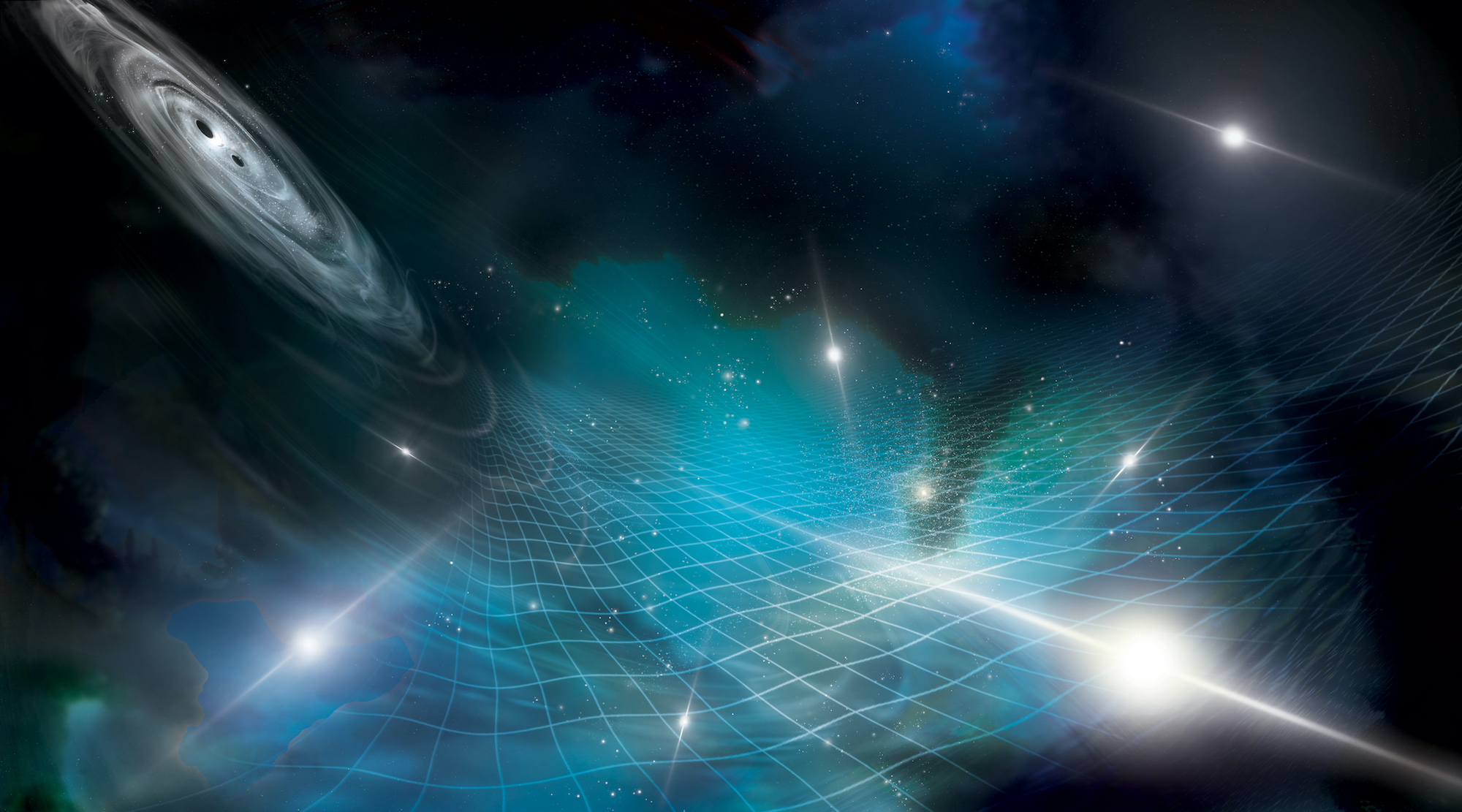Changes in the tick of ‘cosmic clocks’ reveal gravitational waves
June 28, 2023

June 28, 2023

Using part of the Milky Way as an antenna, researchers have found evidence for gravitational waves that undulate over periods of years to decades by measuring changes in the tick of ‘cosmic clocks’, according to new research.
The observations, published today in a suite of papers in The Astrophysical Journal Letters, were collected over 15 years by the North American Nanohertz Observatory for Gravitational Waves (NANOGrav) Physics Frontiers Center (PFC), a collaboration of more than 190 scientists including UBC astronomers. “This is the first evidence for gravitational waves at very low frequencies,” says Dr. Stephen Taylor, assistant professor at Vanderbilt University, who co-led the search and is the current Chair of the collaboration. “After years of work, NANOGrav is opening an entirely new window on the gravitational-wave universe.”
Gravitational waves are ripples in the fabric of the universe caused by massive objects and their movement. These waves travel by compressing or expanding space-time, carrying information about their sources as well as the nature of gravity itself.
The researchers picked up on these low-frequency waves by observing a collection of 68 pulsars, dubbed ‘cosmic clocks’ by astronomers, which are ultra-dense remnants of a massive star's core following its demise in a supernova explosion. Pulsars spin rapidly, sweeping beams of radio waves through space so that they appear to “pulse” when seen from the Earth, like the beam of a lighthouse. “The fastest pulsars, millisecond pulsars, are one and a half times the mass of our Sun compressed to the size of a city, and can rotate faster than a blender. They are particularly reliable and stable as cosmic clocks, because we can measure the arrival of their pulses down to tens or hundreds of nanoseconds. This allows us to detect the tiny variations caused by gravitational waves,” says Kathryn Crowter (she/her), a doctoral candidate in the UBC department of physics and astronomy and NANOGrav researcher.
Einstein’s theory of general relativity predicts precisely how gravitational waves should affect pulsar signals. By stretching and squeezing the fabric of space, gravitational waves affect the timing of each pulse in a small but predictable way, delaying some while advancing others. These shifts are correlated for all pairs of pulsars in a way that depends on how far apart the two stars appear in the sky. “Observing many pulsars allows us to find a combined pattern or signal of this gravitational compression or expansion, evidence for which had been missing - until now,” says NANOGrav co-founder Dr. Ingrid Stairs, a professor in the UBC department of physics and astronomy. “With improved instrument sensitivity and looking at all the data over time, we’re able to detect fainter signals and lower frequencies, or longer gravitational wave lengths.”
Unlike the fleeting high-frequency gravitational waves seen by ground-based instruments like the Laser Interferometer Gravitational-wave Observatory (LIGO), this continuous low-frequency signal could be perceived only with a detector much larger than the Earth: in this case, our sector of the Milky Way galaxy. Over 15 years of observations with the recently collapsed Arecibo Observatory in Puerto Rico, the Green Bank Telescope in West Virginia, and the Very Large Array in New Mexico, NANOGrav has gradually expanded the number of pulsars they observe. “Pulsars are actually very faint radio sources, so we require thousands of hours a year on the world’s largest telescopes to carry out this experiment,” Dr. Maura McLaughlin of West Virginia University and co-director of the NANOGrav PFC explains.
NANOGrav’s most recent dataset shows growing evidence for gravitational waves with periods of years to decades between each wave peak. The most likely source is pairs of twin supermassive black holes, spiraling towards each other, says Dr. Stairs. “We think these systems of black holes exist everywhere in the early universe. If we can get a very precise measurements of the gravitational waves, we can get a better idea of how many of these pairs there are, and how they behave. This in turn could give us more information about some of the processes in the early universe such as galaxy formation.”
Support from the National Science Foundation (NSF) has been critical to NANOGrav’s success by providing support for scientific work through the Physics Frontiers Center program and through access to multiple world-class radio telescopes.
The NANOGrav collaboration receives support from the National Science Foundation Physics Frontiers Center and AccelNet awards, the Gordon and Betty Moore Foundation, a Natural Sciences and Engineering Research Council of Canada (NSERC) Discovery Grant, and the Canadian Institute for Advanced Research (CIFAR).
We honour xwməθkwəy̓ əm (Musqueam) on whose ancestral, unceded territory UBC Vancouver is situated. UBC Science is committed to building meaningful relationships with Indigenous peoples so we can advance Reconciliation and ensure traditional ways of knowing enrich our teaching and research.
Learn more: Musqueam First Nation